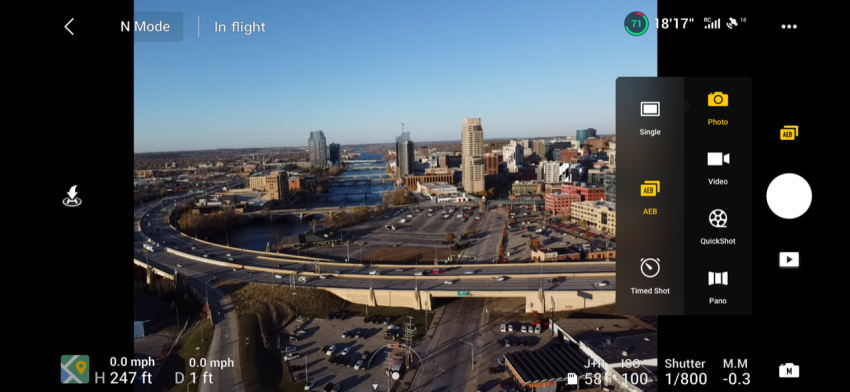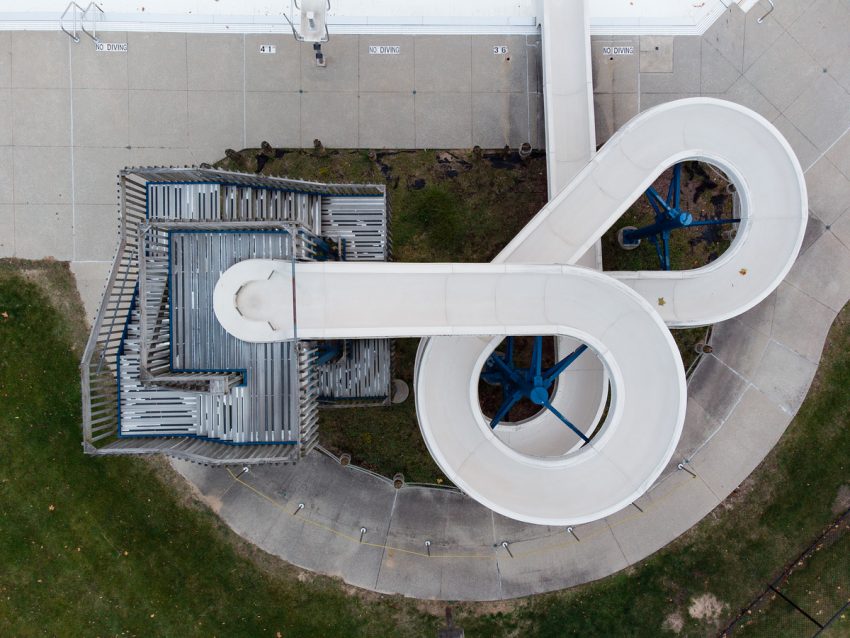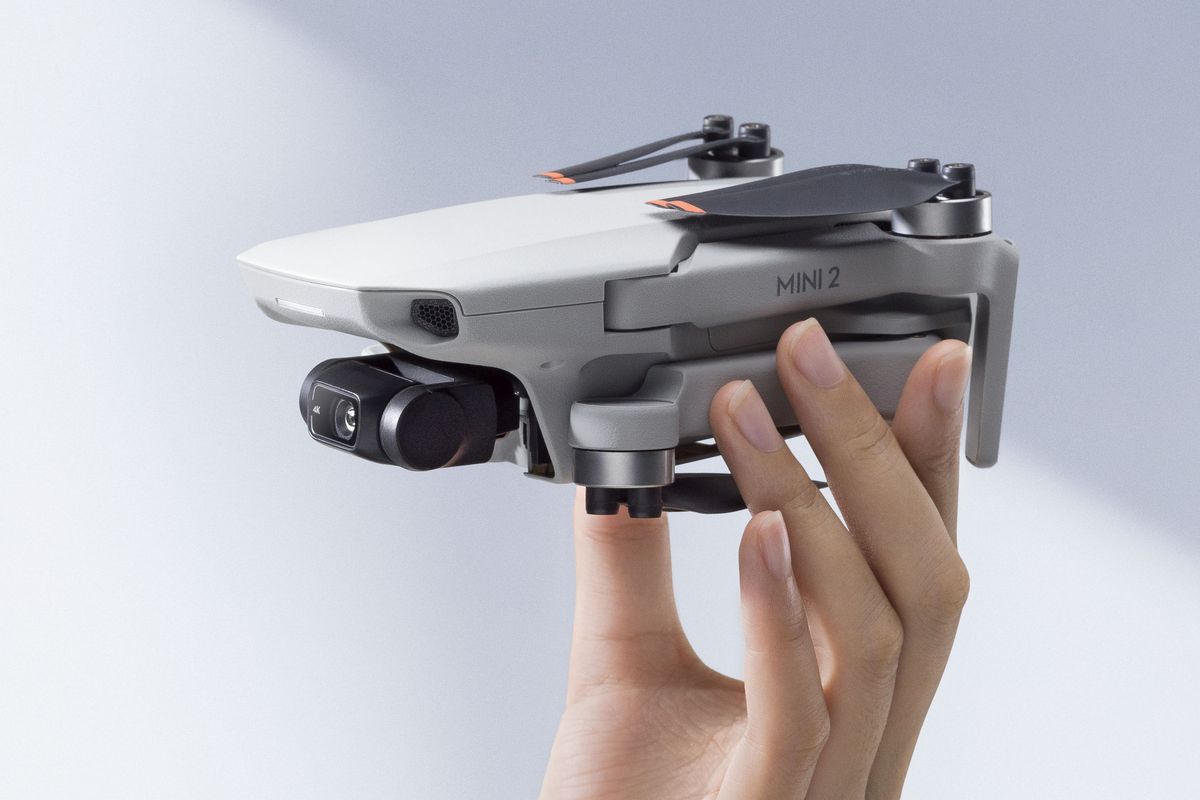It seemed doubtful that we’d hear anything more from this drone company for 2020 after the launch of the DJI Mavic Air 2 and Pocket 2, but it turns out that before the holidays it has one more exciting product for customers. One more drone!
Usually, drones don’t get annual introductions, which is exactly why the announcement of the DJI Mini 2 comes as a surprise.
Thanks to its 249-gram weight, the lightweight drone continues to fly under the radar of the Federal Aviation Administration ( FAA), making it suitable for the first-flyers because it doesn’t require the FAA registration. More significantly, though, it squarely tackles some of the flaws of its predecessor.
Video capture took a step forward
During these days, when 4K video recording has almost become a standard feature among smartphones and cameras, it was a bit of a downturn that last year’s Mavic Mini’s camera only got a 2.7K resolution.

Well, the proper 4K video capture is the first thing on the new Mini 2 list, of which this little buddy can be really proud of. Although the frame rate at 4K recording doesn’t get higher than 30 frames per second, DJI has at least highered the bit rate from 40 Mbps to 100 Mbps on the Mini 2. It also features recording with lower 25p and 24p (which gives you a nice movie effect) and 4x digital zoom.

Mavic_Mini_2_Menu – Picture by dpreview.com 
Out-of-camera JPEG captured by the DJI Mini 2 drone. 
Processed photo from DJI Mini 2 drone using Adobe Lightroom.
But what does it mean for us? For example, with the extra resolution, you will be able to have a bit of room in post-production if you desire to edit the video, crop in and out and then export it to 1080p. And for those who like to keep the original resolution and view the videos and clips on 4K screens, it is ready to go with no further upscaling procedures required.
Details are well rendered and crisp, with the best results being when recording with the optimal light conditions such as during the daytime or afternoon. Colours have a neutral tone, not too saturated to deal with in the post-production but no to blend either. Its performance, however, crumbles as soon as the sun goes down, with a video looking murky, dark and unusable. This is because the camera has only got a basic 12-megapixel 1/2.3-inch sensor connected to a 3-axis gimbal.
Download directly from the drone
It is now possible to connect your Android or iOS phone directly with the drone without needing the remote controller. From there, you can then download images at 20MB/s speed.

Once they’re on your phone, you can also do basic editing with a couple of new tools in the DJI’s app or use an Enhanced Photo function which pops the colour’s saturation up.
OcuSync 2.0 gives assurance
You know how video transmission can be prone to intrusion if you’ve ever piloted the Mavic Mini. It can be quite irritating, but it’s also frightening if it’s prolonged. Luckily, the DJI Mini 2 eases the issues with DJI’s OcuSync 2.0 transmission technology.

The controller is almost the exact replica of the Mavic Air 2 controller. It’s bigger in size but seems convenient for a smartphone to be grabbed at the top of the controller — as compared to the bottom of the previous Mavic Mini controller.
With OcuSync 2.0, the communication between the drone and the controller becomes more secure. The live video feed rarely stuttered during the test flights.


DJI states that the DJI Mini 2 drone is capable of achieving a range of 10km/6.2miles (in FCC-compliant countries like the US and Australia) or 6km (in Europe) so the smooth live video is a must and OcuSync 2.0 should provide us with a lagless, smooth flight experience without any annoying disturbance and with well responsive controls.
More stable in the wind
It’s always risky to fly under windy conditions, but when you fly with a lightweight drone like the Mavic Mini, it’s more profound. Due to strong winds, there are also some videos online of ownersseeing the drone being blown away from their location. The DJI Mini 2 manages the wind much better, even though you still should be cautious.
During the test, the drone was exposed to approx. 17 mph (27km/h)winds. Thankfully, the engines in the Mini 2 were upgraded by DJI to better withstand higher winds up to 24 mph (38.6km/h). In the past, with the previous model Mavic Mini you might have to abort the flight as soon as the winds hit 12 mph as it became harder and harder to maintain its stability.
We can see an improvement in this direction as while the Mini 2 was rattling around in the air and worked hard to retain control, the video footage still stayed quite smooth.
Sport mode & Battery
Switching over to sports mode increases the speed, allowing it to easily cut through the wind. Its top speed still peaks at around 14 mph, but it is apparent that the motors are spinning faster when accelerating from a hovering position.
Isn’t the battery life going to suffer from the more powerful engines? Since the DJI’s Mini 2 battery life has been improved and are about to last up to 31 minutes, which is a minute more than its predecessor, you do not need to worry.

Sadly, the Mini 2 uses a different type of battery, so you won’t be able to use the existing Mavic Mini packs you might have.
Not everything can be perfect
Although the Mini 2 offers some neat cinematic shots, such as dronie, boomerang, and circle quickshot modes, that autonomously pilot the drone for you, it still lacks many features from its bigger brother Mavic Air 2 such as HDR, 60 FPS capture or the asteroid quickshot feature, which might not be such a big deal for many ‘drone-starters’ yet.
The only area that is still drastically missing with the Mini 2, though, is obstacle avoidance. To detect barriers, the Mavic Air 2 features different sensors on its body, so it can stop midflight and try to avoid them. With the Mini 2, you get none of that, which means that you need to be mindful of your surroundings at all times.
The DJI Mini 2 does not offer the automatic tracking mode to allow the drone to follow you so the main way of capturing footage is still manual piloting with the controller.
Also, it’s worth noting that the DJI Fly app might not be completely ready for all devices yet as the app crashed a couple of times during the testing. Luckily, after a restart, it and came back to where it left off. Hopefully, there will be an update soon which would fix these issues in future.
Price & what’s in the box
For its standard pack, the DJI Mini 2 is available to purchase right now for $449 / £419 / AU$749. There are the drone, remote controller, charger, mobile cable (USB-C, Lightning and Micro USB) and extra propeller and control stick in the box.

However, it might be worth it going for the Fly More Combo packages on DJI drones, only because they include useful accessories with good value. The $599 / £549 / AU$949 Travel More Combo of the DJI Mini 2 contains everything as in the standard kit, including two additional batteries, a two-way charging hub, a carry case and propeller guards.
Conclusion
If you’re a first-time drone flyer or just like to gave a good drone for occasional video shooting which doesn’t require FAA registration because of its 249g weight, it might be the right choice. For the price of $449 / £419 / AU$749 you will get drone manufactured by a respective company from rather quality (yet still plastic) components which gives you even more confidence in its responsiveness.
Pros
- Shoots 4K video at 30p/25p/24p at 100Mbps
- OcuSync 2.0 stable connection
- up to 10km (6.2mile) range
- 31 minutes of flying time per one charge
- lightweight (249g)
- Handles windy conditions well
- Compact size
Cons
- Lack of obstacle avoidance sensors
- Lack of ‘follow me’ feature
- Bad low-light video perfomance
There is currently no better alternative at this price point to get same features other than paying extra for DJI Mavic Air 2.



